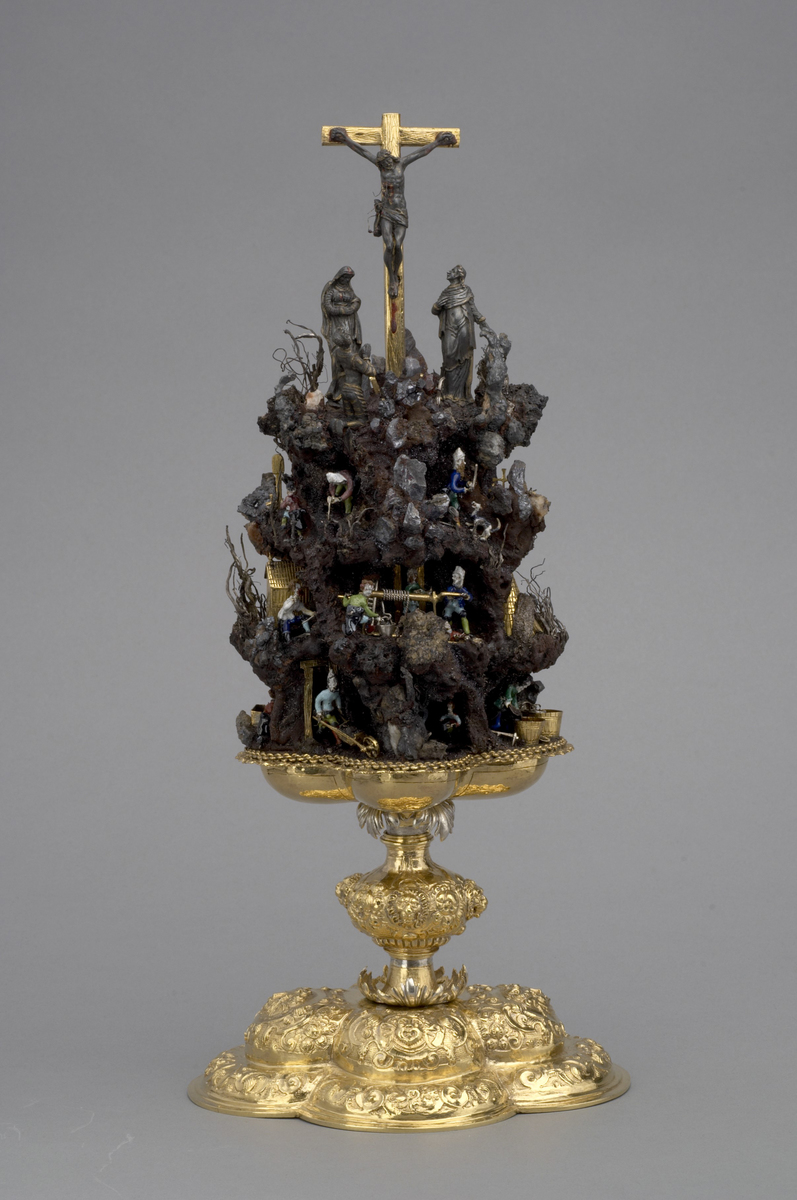Wonder, Riches, and Mining: Handstein by Caspar Ulrich (c. 1555–1576)
Abstract
Mining also had its place in the courtly art world. Handsteins—literally: “hand stones,” or stones the size of human hands—were decorative objects carved from large pieces of mined ore. Handsteins were mounted on metal stands and adorned with figurines and other ornamentation in order to depict mining activities, Biblical stories, or religious scenes. This Handstein by Caspar Ulrich combines a mining scene on the bottom with a crucifixion scene on the top. Handsteins were popular among German collectors in the sixteenth century and were therefore represented in many princely Wunderkammern. Their appeal derived from the fact that they literally symbolized the richness, or mineral wealth, of a land. That this wealth was wondrous and seemingly God-given conferred a certain divinity upon land, ruler, and people alike. Ulrich’s Handstein dates from the second half of the sixteenth century; it was made from ores mined in St. Joachimsthal, a storied mining town in Bohemia (today: Jáchymov, Czech Republic).
Source

Source: Caspar Ulich, Handstein with mine and crucifixion of Christ. 3rd quarter of the 16th century. Silver, gilded, silver luster, minerals, enamel, glass. Kunstkammer, Inv. no. 4157. Kunsthistorisches Museum Vienna. Available online at: www.khm.at/de/object/24c4956895/
Kunsthistorisches Museum Vienna, Kunstkammer
Further Reading
Eric H. Ash, Power, Knowledge, and Expertise in Elizabethan England. Baltimore: Johns Hopkins University Press, 2004.